Spektrum Avian EF1 Handleiding
Spektrum
Radiografisch bestuurbaar speelgoed
Avian EF1
Bekijk gratis de handleiding van Spektrum Avian EF1 (8 pagina’s), behorend tot de categorie Radiografisch bestuurbaar speelgoed. Deze gids werd als nuttig beoordeeld door 40 mensen en kreeg gemiddeld 5.0 sterren uit 20.5 reviews. Heb je een vraag over Spektrum Avian EF1 of wil je andere gebruikers van dit product iets vragen? Stel een vraag
Pagina 1/8

Age Recommendation: Not for children under 14 years. This is not a toy.
NOTICE: This product is only intended for use with unmanned, hobby-grade, remote-
controlled vehicles and aircraft. Horizon Hobby disclaims all liability outside of the intended
purpose and will not provide warranty service related thereto.
NOTICE
All instructions, warranties and other collateral documents are subject to change at the sole
discretion of Horizon Hobby, LLC. For up-to-date product literature, visit horizonhobby.com or
towerhobbies.com and click on the support or resources tab for this product.
Meaning of Special Language
The following terms are used throughout the product literature to indicate various levels of
potential harm when operating this product:
WARNING: Procedures, which if not properly followed, create the probability of property
damage, collateral damage, and serious injury OR create a high probability of superficial injury.
CAUTION: Procedures, which if not properly followed, create the probability of physical
property damage AND a possibility of serious injury.
NOTICE: Procedures, which if not properly followed, create a possibility of physical property
damage AND a little or no possibility of injury.
WARNING: Read the ENTIRE instruction manual to become familiar with the
features of the product before operating. Failure to operate the product correctly
can result in damage to the product, personal property and cause serious injury.
This is a sophisticated hobby product. It must be operated with caution and common sense
and requires some basic mechanical ability. Failure to operate this Product in a safe and
responsible manner could result in injury or damage to the product or other property. This
product is not intended for use by children without direct adult supervision. Do not attempt
disassembly, use with incompatible components or augment product in any way without
the approval of Horizon Hobby, LLC. This manual contains instructions for safety, operation
and maintenance. It is essential to read and follow all the instructions and warnings in the
manual, prior to assembly, setup or use, in order to operate correctly and avoid damage or
serious injury.
Building a power system
Electric power systems need to be matched to the needs of your aircraft. There are several
important variables you must choose for your electric motor power system, and changing any
one of those variables will change how the power system performs. Estimate your aircraft's
all up weight, and begin your calculations by deciding how much power you demand for your
aircraft and your style of flying.
• If your aircraft has moderate performance (for a trainer to a moderate sport plane):
75–125 watts per pound.
• If your aircraft is high performance (for high speed, 3D or other high performance aircraft):
175–250 watts per pound.
Watts are determined by multiplying volts and amps (current). Review the motor data and
select a motor capable of delivering constant watts to meet your aircraft's needs, and is rated
to spin a propeller suitable for your airframe.
Spektrum™ Avian™ Outrunner Brushless Motors
Motor SPMXAM4502 SPMXAM4560 SPMXAM4595 SPMXSA4620 SPMXAM4630 SPMXAM4670 SPMXAM4675 SPMXAM4700 SPMXAM4725 SPMXAM4715 SPMXAM4745 SPMXAM4740 SPMXAM4770 SPMXAM4795 SPMXAM4796 SPMXAM4800 SPMXAM4805
Description Avian 2813-1750Kv Avian 2830-950Kv Avian 3530-
1250Kv
Avian 3536-
1200Kv
Avian EF1 Race
3545-1250kV
Avian 4240-
800Kv
Avian 4240-
1000Kv
Avian 4250-
800Kv
Avian 4260-
800Kv
Avian 4260-
480Kv
Avian 5055-
650Kv
Avian 5055-
500Kv
Avian 5065-450Kv Avian 6362-
250Kv
Avian 6362-
200Kv
Avian 8075-
230Kv
Avian 8085-
160Kv
Includes prop saver, prop adapter
and motor mount
prop saver, prop adapter
and motor mount
prop adapter and
motor mount
prop adapter and
motor mount
prop adapter and
motor mount
prop adapter and
motor mount
prop adapter and
motor mount
prop adapter and
motor mount
prop adapter and
motor mount
prop adapter and
motor mount
prop adapter and
motor mount
prop adapter and
motor mount
prop adapter and
motor mount
prop adapter and
motor mount
prop adapter and
motor mount
prop adapter and
motor mount
prop adapter and
motor mount
Diameter 28 mm (1.1 in) 28 mm (1.1 in) 35 mm (1.4 in) 35 mm (1.4 in) 35 mm (1.4 in) 42 mm (1.7 in) 42 mm (1.7 in) 42 mm (1.7 in) 42 mm (1.7 in) 42 mm (1.7 in) 50 mm (2.0 in) 50 mm (2.0 in) 50 mm (2.0 in) 63 mm (2.5 in) 63 mm (2.5 in) 80 mm (3.1 in) 80 mm (3.1 in)
Length 13 mm (0.51 in) 30 mm (1.2 in) 30 mm (1.2 in) 36 mm (1.4 in) 45 mm (1.77in) 40mm (1.57in) 40 mm (1.6 in) 50 mm (2.0 in) 60 mm (2.4 in) 60 mm (2.4 in) 55 mm (2.2 in) 55 mm (2.2 in) 65 mm (2.6 in) 62 mm (2.4 in) 62 mm (2.4 in) 75 mm (3.0 in) 85 mm (3.4 in)
Kv 1750 950 1250 1200 1250 800 1000 800 800 480 650 500 450 250 200 230 160
Constant Watts 90 160 325 500 700 592 650 850 1000 1100 1200 1300 1800 2500 1450 5000 6500
Burst Watts 120 220 390 650 1000 740 740 1480 1850 1850 2200 2200 2300 3200 2300 6500 8400
Weight 20g (0.71 oz) 54g (1.9 oz) 71g (2.5 oz) 102g (3.6 oz) 159g [5.6oz.] 125g [4.4oz] 125g (4.4 oz) 198g (7 oz) 268g (9.5 oz) 268g (9.5 oz) 298g (10.5 oz) 298g (10.5 oz) 400g (14.1 oz) 634g (22.4 oz) 635g (22.4oz) 1250g (44.1 oz) 1480g (52.2 oz)
Shaft Diameter 3 mm (0.12 in) 3 mm (0.12 in) 4 mm (0.16 in) 4 mm (0.16 in) 5 mm (0.2 in) 5 mm (0.2 in) 5 mm (0.2 in) 5 mm (0.2 in) 5 mm (0.2 in) 5 mm (0.2 in) 8 mm (0.31 in) 8 mm (0.31 in) 8 mm (0.31 in) 8 mm (0.31 in) 8 mm (0.31 in) 10 mm (0.39 in) 10 mm (0.39 in)
Voltage Range 7.4-11.1V / 2-3S LiPo 7.4-11.1V / 2-3S LiPo 7.4-11.1V / 2-3S
LiPo
11.1-14.8V / 3-4S
LiPo
7.4-14.8V / 2-4S
LiPo
11.1-18.5V /
3-5S LiPo
11.1-14.8V /
3-4S LiPo
11.1-14.8V /
3-4S LiPo
18.5-22.2V /
5-6S LiPo
18.5-22.2V / 5-6S
LiPo
18.5 - 22.2V /
5-6S LiPo
18.5 - 22.2V /
5-6S LiPo
18.5 - 22.2V /
5-6S LiPo
33.3 - 37.0V /
9-10S LiPo
37.0-44.4V /
10-12S LiPo
33.3-55.5V /
9-15S LiPo
33.3-55.5V /
9-15S LiPo
Aircraft Weight
(Sport)
225g (8 oz) 905g (32 oz) 1360g (3 lbs) 1815g (4 lbs) 1585g (3.5lb) 2676g-3583g
(5.9-7.9lb)
2040g (4.5 lbs) 2950g (6.5 lbs) 3400g (7.5 lbs) 4310g
(9.5 lbs)
4705g
(10.5 lbs)
5215g
(11.5 lbs)
6520 g
(14.5 lbs)
9070 g
(20 lbs)
11,340g (25lbs) 12.7 kg
(28 lbs)
19.1 kg
(42 lbs)
Aircraft Weight
(3D)
140 g (5 oz) 565 g (20 oz) 905 g (2 lbs) 1135 g (2.5 lbs) Not intended
for 3D
1769g (3.9lb) 1360 g (3 lbs) 1845 g (4 lbs) 2210 g (5 lbs) 2720 g (6 lbs) 2950 g (6.5 lbs) 3175 g (7 lbs) 4080 g (9 lbs) 5445 g (12 lbs) 7.711g (17lbs) 8.17 kg (18 lbs) 11.79 kg (26 lbs)
Power System
Recommendation
8 Amp ESC, 2S LiPo, 7x6
to 8x4 Slow-y Prop
25 Amp ESC, 3S LiPo,
8x6 to 10x4.5 Slow-y
Prop
35 Amp ESC, 3S
LiPo, 10x4.5 to
10x7 Electric Prop
45 Amp ESC, 4S
LiPo, 10x7 to 11x7
Electric Prop
70 Amp ESC. 4S
lipo, 8X8 Electric
prop
35A ESC, 10x5
- 13x8 Electric
Prop
45 Amp ESC,
3S LiPo, 11x8.5
to 12x6 Electric
Prop
45 Amp ESC,
4S LiPo, 12x6
to 13x8 Electric
Prop
60 Amp ESC,
6S LiPo, 10x5
to 11x5 Electric
Prop
60 Amp ESC, 6S
LiPo, 13x10 to
15x8 Electric P
60 Amp ESC,
6S LiPo, 12x6
to 13x4 Electric
Prop
60 Amp ESC,
6S LiPo, 15x6
to 15x8 Electric
Prop
80 Amp ESC, 6S
LiPo, 16x6 to 17x8
Electric Prop
80 Amp ESC,
10S LiPo, 16x8
to 18x8 Electric
Prop
80-100A ESC,
12S LiPo,17x10-
19x10 Electric
Prop
120 Amp ESC,
12S LiPo, 22x8 to
22x10 Prop
120 Amp ESC,
12S LiPo, 22x10
to 26x12 Prop
Instruction Manual
Brushless Outrunner Motor Mounts Compatible motors
SPMXAMA1200 Small 28 mm motors
SPMXAMA1205 Medium 35-42 mm motors
SPMXAMA1210 Large 50-63 mm motors
Outrunner Prop Adapters Compatible motors
SPMXAMA4903 35mm Diameter Motors
SPMXAMA4906 42mm Diameter Motors
SPMXAMA4909 50mm Diameter Motors
SPMXAMA4912 63mm Diameter Motors
SPMXAM4502, SPMXAM4560, SPMXAM4595, SPMXSA4620, SPMXAM4630, SPMXAM4670, SPMXAM4675, SPMXAM4700, SPMXAM4725, SPMXAM4715, SPMXAM4745, SPMXAM4740, SPMXAM4770, SPMXAM4795, SPMXAM4796, SPMXAM4800, SPMXAM4805
Selecting a propeller
Selecting a motor will narrow down the propeller options, but choosing the propeller and
battery can vastly affect the power system performance. Expect to test a variety of propeller
sizes to find what works best for your aircraft and flying style.
The first number on the propeller is the diameter in inches. The second number represents the
pitch and is written as the number of inches the propeller will move forward in one revolution.
Increasing either the pitch or the diameter will increase current draw. A small propeller with
large pitch may draw similar current as a larger propeller with smaller pitch, but they will have
very different flight performance. A small diameter propeller with a large pitch will deliver more
speed, at the expense of pulling power for vertical maneuvers and aerobatics. A larger diameter
propeller with a smaller pitch will not deliver as much speed, but has more pulling power for
3D aerobatics or vertical climbs.
Be aware of ground clearance as well. Having enough room to swing a large propeller often
becomes the limiting factor in choosing a power system. Before you start searching for a
suitable propeller, research the maximum diameter propeller for your airframe.
Always balance propellers before use. A well balanced propeller will improve efficiency, make
the aircraft run smoother and quieter, and will reduce wear on your motor mount and airframe.
A poorly balanced propeller can cause damage to an airframe if vibration is ignored.
Selecting a battery
We recommend Spektrum Smart batteries to go along with the power system. Changing the
cell count of the battery can vastly affect the power system performance. Review your motor
specifications for the range of battery ratings (voltage) your motor is rated for. Choose a battery
based on the dimensions of your aircraft, balance needs for your aircraft (CG), cell count
(voltage), and your estimated maximum current.
TIP: Voltage (cell count) determines how fast a motor will spin, and capacity (mAh)
determines how long the battery charge will last.
TIP: You can use the volts x current = watts equation to estimate your current at different
voltage. Watts/volts = current. Use this equation to determine your expected current with
different battery cell count (voltage).
TIP: LiPo batteries have a "C" rating. This determines the maximum current the battery
is rated to deliver. Multiply the battery's capacity (mAh) and the C rating to determine the
maximum current the battery is rated to deliver.
Selecting an ESC
Choose an ESC that is able to handle more than the maximum estimated current. Selecting the
next size up is often a wise choice to leave a buffer. Separately, consider how much current
the servos being used on your aircraft will draw if you are going to be powering the receiver
from an integrated BEC on the ESC. We recommend Spektrum Smart ESCs to pair with Smart
batteries and these Avian motors. When used with a Smart compatible telemetry receiver and
transmitter, you can determine important power system data without additional equipment. All
of the metrics you need to properly set up and understand your power system are available on
your transmitter screen with this system including current, voltage, RPM (pole count required to
be input into Smart ESC telemetry setup screen for RPM) and more.
Propeller adapters
Determine what type of propeller adapter you plan to use in preparation for mounting the
motor.
• For prop saver style mounts always use quality O-rings and ensure the rubber is in good
condition and well secured before connecting power to the aircraft.
• For collet style propeller adapters be sure the nut is securely tightened so the motor shaft
cannot slip, however further tightening is not necessary and may damage the collet.
• For directly mounted propeller adapters use a small amount of removable thread lock and
tighten the mounting screws in a star pattern to ensure it is centered on the motor.
Motor installation
Determine what type of motor mount you plan to use in preparation for mounting the motor.
Be aware of the length of mounting screws extending into the motor. Take into account the
thickness of the firewall and never allow motor mounting screws to come into contact with the
wires inside the motor (motor windings). If the mounting screws are tightened onto the motor
windings there is a good chance the windings will be permanently damaged. Damage caused
during installation is not covered under warranty.
Connecting the motor
The motor wires may be connected to the ESC in any order. If you need to reverse the motor
direction, trade any two of the three connectors.
Power System Testing
If you do not have power system data through telemetry you will need to source a power meter
(watt meter) to measure how many watts your power system is pulling and how well your
batteries are holding up voltage under load. Testing and tuning your power system may be as
simple as checking you are within the specifications, or it may come down to changing the
propeller or battery to suit your needs.
Conduct ground testing first, once performance is verified proceed to flight testing. If you
decide to increase the propeller size or battery cell count after your first flights, you will need to
go back to ground testing to check power consumption before proceeding to more flights.
TIP: A power system is only as good as the battery supplying the power. Always begin power
system testing with a fully charged battery known to be in good operating condition, and
monitor the voltage during testing for signs of the battery's aptitude to handle the power
demands. With no load the battery voltage will be highest, and it will be lowest at full throttle.
The more power (watts) you demand from the battery, the more the voltage will sag, which is
normal. Learning how to understand voltage sag is import because it is an important indicator
of a battery's health and how suitable that battery is for a given application. Batteries with
a higher C rating will have less voltage sag under power demands, which is why they can
deliver more power. At no time during testing should battery voltage drop below 3.0 volts per
cell (for LiPo type batteries, other batteries types will vary). Do the math for your battery cell
count and never let the voltage drop below that value. When a battery is new and operating
to full potential it will hold the voltage up better under load, and as a battery is used and
abused it will loose its ability to hold voltage up under load (power demands). The motor RPM
is directly related to the voltage, so if the voltage sags the motor slows down. The result of
this in real life is a new battery is powerful and seems fresh, and old batteries cannot deliver
the power they did when new and seem sluggish. If you are testing with an old battery that
cannot deliver sufficient current without the voltage sagging, you will not see the actual
performance capabilities of the power system.
Ground Testing
Warning: Always secure your aircraft prior to ground testing. Do not stand in front of
a spinning propeller or reach around a propeller to make adjustments during testing.
Failure to heed this warning may result in severe physical injury.
A power system will usually draw more power on the ground when testing static thrust than
it will when the system is being used in flight, so it is reasonable to expect it will be drawing
less power in flight if you are within the limits on the ground. Be aware, however, that airflow
for cooling won't be as good on the ground as it should be in the air (with sufficiently good
airframe design), so you need to monitor your power system temperatures during testing to
prevent overheating.
Begin testing with the battery and propeller you chose to verify the power system is operating
within the specifications of the motor, ESC and battery. You should find the watts does not
exceed the motor's rating for continuous wattage, but if it does, never exceed the burst rating
for wattage. If you exceed the continuous wattage, you should be aware of the throttle setting
where you exceed that value and be cautious not to use throttle settings above that for any
extended time period. If the wattage exceeds the burst rating for your motor during testing,
you will need to make a change to the power system to prevent overloading the motor. If
you overload the motor and continue to operate it, the motor will overheat which may cause
permanent damage. If you need to reduce the wattage your motor is pulling, you may change
the propeller or change the battery (voltage/cell count). Reducing the propeller diameter or
pitch will reduce power consumed, and going to a lower cell count battery will also reduce
power consumption.
Double check your math for watts per pound with actual values instead of estimates, and
proceed to flight testing as long as everything is aligned with your original estimates.
Flight Testing
Fly the aircraft in the manner you plan to normally fly it. If this includes high speed aggressive
flying, or 3D aerobatics be sure to land frequently and check the power system components
temperature to make sure nothing is getting hot. If you want more speed, consider reducing
the diameter and increasing the pitch of your propeller. If you want more pulling power for
aerobatics and hovering type of maneuvers consider going to a larger diameter with a smaller
pitch. If you go up with one number and down with the other you can make the change with
minimal impact on the wattage consumed. If you only go up with one of the numbers you need
to go back to ground testing to verify you aren't pulling too much power. If you want a lot more
power and have enough overhead with the wattage you are putting through the motor, you
can go to a larger cell count battery. Be aware going to a higher cell count battery will draw
a lot more power because the motor will spin faster, so you will need to go back to ground
testing and you might need to reduce the propeller size and/or pitch to keep the power system
operating within the specifications.

Warranty and Service Contact Information
What this Warranty Covers
Horizon Hobby, LLC, (Horizon) warrants to the original purchaser that the product purchased (the
“Product”) will be free from defects in materials and workmanship for a period of 1 year from the
date of purchase.
What is Not Covered
This warranty is not transferable and does not cover (i) cosmetic damage, (ii) damage due to acts
of God, accident, misuse, abuse, negligence, commercial use, or due to improper use, installation,
operation or maintenance, (iii) modication of or to any part of the Product, (iv) attempted service
by anyone other than a Horizon Hobby authorized service center, (v) Product not purchased from an
authorized Horizon dealer, (vi) Product not compliant with applicable technical regulations, or (vii)
use that violates any applicable laws, rules, or regulations.
OTHER THAN THE EXPRESS WARRANTY ABOVE, HORIZON MAKES NO OTHER WARRANTY OR
REPRESENTATION, AND HEREBY DISCLAIMS ANY AND ALL IMPLIED WARRANTIES, INCLUDING,
WITHOUT LIMITATION, THE IMPLIED WARRANTIES OF NON-INFRINGEMENT, MERCHANTABILITY AND
FITNESS FOR A PARTICULAR PURPOSE. THE PURCHASER ACKNOWLEDGES THAT THEY ALONE HAVE
DETERMINED THAT THE PRODUCT WILL SUITABLY MEET THE REQUIREMENTS OF THE PURCHASER’S
INTENDED USE.
Purchaser’s Remedy
Horizon’s sole obligation and purchaser’s sole and exclusive remedy shall be that Horizon
will, at its option, either (i) service, or (ii) replace, any Product determined by Horizon to
be defective. Horizon reserves the right to inspect any and all Product(s) involved in a
warranty claim. Service or replacement decisions are at the sole discretion of Horizon. Proof
of purchase is required for all warranty claims. SERVICE OR REPLACEMENT AS PROVIDED
UNDER THIS WARRANTY IS THE PURCHASER’S SOLE AND EXCLUSIVE REMEDY.
Limitation of Liability
HORIZON SHALL NOT BE LIABLE FOR SPECIAL, INDIRECT, INCIDENTAL OR CONSEQUENTIAL
DAMAGES, LOSS OF PROFITS OR PRODUCTION OR COMMERCIAL LOSS IN ANY WAY,
REGARDLESS OF WHETHER SUCH CLAIM IS BASED IN CONTRACT, WARRANTY, TORT,
NEGLIGENCE, STRICT LIABILITY OR ANY OTHER THEORY OF LIABILITY, EVEN IF HORIZON HAS
BEEN ADVISED OF THE POSSIBILITY OF SUCH DAMAGES. Further, in no event shall the liability
of Horizon exceed the individual price of the Product on which liability is asserted. As Horizon
has no control over use, setup, nal assembly, modication or misuse, no liability shall be
assumed nor accepted for any resulting damage or injury. By the act of use, setup or assembly,
the user accepts all resulting liability. If you as the purchaser or user are not prepared to accept
the liability associated with the use of the Product, purchaser is advised to return the Product
immediately in new and unused condition to the place of purchase.
Law
These terms are governed by Illinois law (without regard to conict of law principals). This warranty
gives you specic legal rights, and you may also have other rights which vary from state to state.
Horizon reserves the right to change or modify this warranty at any time without notice.
WARRANTY SERVICES
Questions, Assistance, and Services
Your local hobby store and/or place of purchase cannot provide warranty support or service. Once
assembly, setup or use of the Product has been started, you must contact your local distributor or
Horizon directly. This will enable Horizon to better answer your questions and service you in the
event that you may need any assistance. For questions or assistance, please visit our website at
www.horizonhobby.com, submit a Product Support Inquiry, or call the toll free telephone number
referenced in the Warranty and Service Contact Information section to speak with a Product Support
representative.
Inspection or Services
If this Product needs to be inspected or serviced and is compliant in the country you live and use
the Product in, please use the Horizon Online Service Request submission process found on our
website or call Horizon to obtain a Return Merchandise Authorization (RMA) number. Pack the
Product securely using a shipping carton. Please note that original boxes may be included, but are
not designed to withstand the rigors of shipping without additional protection. Ship via a carrier
that provides tracking and insurance for lost or damaged parcels, as Horizon is not responsible for
merchandise until it arrives and is accepted at our facility. An Online Service Request is available
at http://www.horizonhobby.com/content/service-center_render-service-center. If you do not
have internet access, please contact Horizon Product Support to obtain a RMA number along with
instructions for submitting your product for service. When calling Horizon, you will be asked to
provide your complete name, street address, email address and phone number where you can
be reached during business hours. When sending product into Horizon, please include your RMA
number, a list of the included items, and a brief summary of the problem. A copy of your original
sales receipt must be included for warranty consideration. Be sure your name, address, and RMA
number are clearly written on the outside of the shipping carton.
NOTICE: Do not ship LiPo batteries to Horizon. If you have any issue with a LiPo
battery, please contact the appropriate Horizon Product Support office.
Warranty Requirements
For Warranty consideration, you must include your original sales receipt verifying the proof-of-
purchase date. Provided warranty conditions have been met, your Product will be serviced or
replaced free of charge. Service or replacement decisions are at the sole discretion of Horizon.
Non-Warranty Service
Should your service not be covered by warranty, service will be completed and payment will
be required without notication or estimate of the expense unless the expense exceeds 50%
of the retail purchase cost. By submitting the item for service you are agreeing to payment of
the service without notication. Service estimates are available upon request. You must include
this request with your item submitted for service. Non-warranty service estimates will be billed
a minimum of ½ hour of labor. In addition you will be billed for return freight. Horizon accepts
money orders and cashier’s checks, as well as Visa, MasterCard, American Express, and
Discover cards. By submitting any item to Horizon for service, you are agreeing to Horizon’s
Terms and Conditions found on our website http://www.horizonhobby.com/content/service-
center_render-service-center.
ATTENTION: Horizon service is limited to Product compliant in the country of use
and ownership. If received, a non-compliant Product will not be serviced. Further,
the sender will be responsible for arranging return shipment of the un-serviced
Product, through a carrier of the sender’s choice and at the sender’s expense.
Horizon will hold non-compliant Product for a period of 60 days from notification,
after which it will be discarded.
10/15
FCC Information
Supplier’s Declaration of Conformity
This device complies with part 15 of the FCC Rules. Operation is subject to the
following two conditions: (1) This device may not cause harmful interference, and (2)
this device must accept any interference received, including interference that may
cause undesired operation.
Changes or modications not expressly approved by the party CAUTION:
responsible for compliance could void the user’s authority to operate the
equipment.
NOTE: This equipment has been tested and found to comply with the limits for a Class B digital
device, pursuant to part 15 of the FCC Rules. These limits are designed to provide reasonable
protection against harmful interference in a residential installation. This equipment generates,
uses and can radiate radio frequency energy and, if not installed and used in accordance with
the instructions, may cause harmful interference to radio communications. However, there is
no guarantee that interference will not occur in a particular installation. If this equipment does
cause harmful interference to radio or television reception, which can be determined by turning
the equipment off and on, the user is encouraged to try to correct the interference by one or
more of the following measures:
Reorient or relocate the receiving antenna.
Increase the separation between the equipment and receiver.
Connect the equipment into an outlet on a circuit different from that to which the receiver is
connected.
Consult the dealer or an experienced radio/TV technician for help.
Horizon Hobby, LLC
2904 Research Rd.,
Champaign, IL 61822
Email: compliance@horizonhobby.com
Web: HorizonHobby.com
CAN ICES-3 (B)/NMB-3(B)
This device contains license-exempt transmitter(s)/receivers(s) that comply with Innovation,
Science, and Economic Development Canada’s license-exempt RSS(s). Operation is subject
to the following 2 conditions:
1. This device may not cause interference.
2. This device must accept any interference, including interference that may cause
undesired operation of the device.
IC Information
Country of Purchase Horizon Hobby Contact Information Address
United States
of America
Horizon Service Center
(Repairs and Repair Requests) servicecenter.horizonhobby.com/RequestForm/
2904 Research Rd.
Champaign, Illinois
61822
USA
Horizon Product Support
(Product Technical Assistance)
productsupport@horizonhobby.com.
877-504-0233
Sales
websales@horizonhobby.com
800-338-4639
© 2022 Horizon Hobby, LLC. Avian, and the Horizon Hobby logo are trademarks or registered trademarks of Horizon Hobby, LLC. The Spektrum trademark is used with permission of Bachmann Industries, Inc. All other trademarks, service marks and logos are property of their respective owners. Updated 01/2022 209135.4

SPMXAM4502, SPMXAM4560, SPMXAM4595, SPMXSA4620, SPMXAM4630, SPMXAM4670, SPMXAM4675, SPMXAM4700, SPMXAM4725, SPMXAM4715, SPMXAM4745, SPMXAM4740, SPMXAM4770, SPMXAM4795, SPMXAM4796, SPMXAM4800, SPMXAM4805
Auswahl eines Propellers
Durch die Auswahl eines Motors, werden die Propelleroptionen eingegrenzt. Doch die Auswahl
von Propeller und Akku kann sich erheblich auf die Leistung des Stromversorgungssystems
auswirken. Gehen Sie davon aus eine Vielzahl an Propellergrößen zu testen, um die zu finden,
die am besten zu Ihrem Fluggerät und Flugstil passt.
Die erste Zahl auf dem Propeller ist die Angabe des Durchmessers in Zoll. Die zweite Zahl zeigt
die Blattverstellung an und ist als Anzahl an Zoll angegeben, die der Propeller sich in einer
Umdrehung vorwärts bewegt. Durch Vergrößern von entweder Blattverstellung oder Durchmesser
wird die Stromaufnahme gesteigert. Ein kleinerer Propeller mit weiter Blattverstellung kann
genauso viel Strom aufnehmen wie ein breiterer Propeller mit geringerer Blattverstellung, aber
sie haben sehr unterschiedliche Flugleistungen. Ein kleiner Propellerdurchmesser mit weiter
Blattverstellung liefert mehr Geschwindigkeit, auf Kosten der Zugkraft für vertikale Manöver und
Kunstflug. Ein weiterer Propellerdurchmesser mit kleinerer Blattverstellung liefert nicht so viel
Geschwindigkeit, aber mehr Zugkraft für Kunstflugmanöver oder Steigflüge.
Beachten Sie auch die Bodenfreiheit. Genügend Raum zum Laufen eines breiten Propellers
wird oft zum begrenzenden Faktor bei der Auswahl eines Stromversorgungsystems. Informieren
Sie sich über den maximalen Propellerdurchmesser für Ihr Flugwerk bevor Sie die Suche nach
einem geeigneten Propeller beginnen.
Balancieren Sie Propeller stets aus bevor Sie sie benutzen. Ein gut ausbalancierter Propeller
verbessert die Effizienz, sorgt für reibungsloseres und ruhigeres Laufen der Fluggeräts und reduziert
den Verschleiß an Ihrer Motorhalterung und Ihrem Flugwerk. Ein schlecht ausbalancierter Propeller
kann Schäden am Flugwerk verursachen, wenn Schwingungen nicht berücksichtigt werden.
Einen Akku auswählen
Wir empfehlen Spektrum Smart-Akkus mit dem Stromversorgungssystem zu verwenden. Ein
Ändern der Zellanzahl des Akkus kann die Leistung des Stromversorgungssystems erheblich
beeinflussen. Überprüfen Sie Ihre Motorspezifikationen für den Bereich an Batteriekapazitäten,
für die Ihr Motor ausgelegt ist. Wählen Sie eine Batterie basierend auf den Abmessungen Ihres
Fluggeräts, dem notwendigen Ausbalancieren Ihres Fluggeräts (CG), Zellanzahl (Spannung) und
Ihrem geschätzten maximalen Strom.
TIPP: Die Spannung (Zellanzahl) bestimmt, wie schnell ein Motor sich dreht, und die Kapazität
(mAh) bestimmt, wie lange die Batterieladung anhält.
TIPP: Sie können die Gleichung Spannung x Stromstärke = Watt zur Berechnung Ihres Stroms
bei verschiedener Spannung benutzen. Watt/Volt = Stromstärke Benutzen Sie diese Gleichung,
um Ihre erwartete Stromstärke mit verschiedener Zellanzahl im Akku zu bestimmen (Spannung).
TIPP: LiPo-Akkus haben die Bewertung "C". So wird die maximale Stromstärke bestimmt, die
dieser Akku zu liefern eingestuft ist. Multiplizieren Sie die Kapazität des Akkus (mAh) und die
C-Bewertung, um die maximale Stromstärke zu bestimmen, die dieser Akku zu liefern eingestuft ist.
Einen Geschwindigkeitsregler auswählen
Wählen Sie einen Geschwindigkeitsregler aus, der für mehr als die maximal geschätze Stromstärke
ausgelegt ist. Die nächstgrößere Größe zu nehmen, ist oft eine kluge Entscheidung, um einen
Puffer zu bewahren. Bewerten Sie separat, wie viel Strom die an Ihrem Fluggerät verwendeten
Servos aufnehmen, wenn Sie den Empfänger über einen integrierten Akkusperrkreis am
Geschwindigkeitsregler mit Strom versorgen. Wir empfehlen Spektrum Smart Geschwindigkeitsregler
mit Smart-Akkus und diesen Avian-Motoren gemeinsam zu verwenden. Bei Verwendung mit
einem Smart-kompatiblen Telemetriesender und- empfänger können Sie wichtige Daten des
Stromversorgungssystems ohne zusätzliche Ausrüstung bestimmen. Alle Messgrößen, die
Sie brauchen, um Ihr Stromversorgungssystem richtig einzustellen und zu verstehen sind auf
Ihrem Senderbildschirm mit diesem System verfügbar, einschließlich Stromstärke, Spannung,
Motordrehzahl (die Motorpolzahl muss im Einrichtungsbildschirm für die Motordrehzahl in der
Telemetrie des Smart-Geschwindigkeitreglers eingegeben werden) und weitere mehr.
Propelleradapter
Bestimmen Sie welche Art von Propelleradapter Sie in der Vorbereitung zum Einbau des Motors
zu verwenden planen.
• Für Prop-Saver-Montagen benutzen Sie stets hochwertige O-Ringe und stellen Sie sicher,
dass das Gummi sich in gutem Zustand befindet und gut gesichert ist, bevor Sie das
Fluggerät an die Stromversorgung anschließen.
• Für Propelleradapter mit Spannzangenfutter vergewissern Sie sich, dass die Mutter sicher
befestigt ist, um ein Rutschen der Motorwelle zu vermeiden. Ein weiteres Festziehen ist
jedoch nicht nötig und könnte die Klemmbuchse beschädigen.
• Für direkt montierte Propelleradapter benutzen Sie eine kleine Menge entfernbarer
Gewindesicherung und befestigen Sie die Montageschrauben sternförmig, um
sicherzustellen, dass sie auf dem Motor zentriert werden.
Montage des Motors
Bestimmen Sie welche Art von Motormontage Sie in der Vorbereitung zum Einbau des
Motors zu verwenden planen. Beachten Sie die Länge der Montageschrauben, die in den
Motor hineinreichen. Berücksichtigen Sie die Dicke der Brandschutzwand und erlauben Sie
niemals, dass die Motormontageschrauben in Kontakt mit den Kabeln innerhalb des Motors
(Motorwicklungen) geraten. Wenn die Montageschrauben auf den Motorwicklungen angezogen
werden, werden diese mit großer Wahrscheinlichkeit dauerhaft beschädigt. Schäden während
der Installation werden nicht durch die Garantie gedeckt.
Anschließen des Motors
Die Motorkabel können in beliebiger Reihenfolge an den Geschwindigkeitsregler angeschlossen
werden. Wenn Sie die Motorrichtung umkehren müssen, nehmen Sie zwei beliebige der drei
Anschlüsse.
Testen des Stromversorgungssystems
Wenn Sie die Daten des Stromversorgungssystems nicht durch Telemetrie bekommen,
müssen Sie einen Leistungsmesser (Wattmeter) einsetzen, um zu messen, wie viele Watt
Ihr Stromversorgungssystem zieht und wie gut Ihre Akkus die Spannung unter Belastung
beibehalten. Testen und Anpassen Ihres Stromversorgungssystems kann ganz einfach daraus
bestehen, zu prüfen, ob Sie die Spezifikationen einhalten oder es kann bedeuten, Propeller oder
Akku auszutauschen, um Ihren Bedürfnissen zu entsprechen.
Führen Sie zuerst einen Bodentest durch. Nachdem die Leistung überprüft wurde, nehmen
Sie die Flugtests vor. Wenn Sie entscheiden die Propellergröße oder die Zellanzahl im Akku
nach Ihren ersten Flügen zu vergrößern, müssen Sie wieder Bodentests durchführen, um den
Stromverbrauch zu prüfen, bevor Sie weitere Flüge vornehmen.
TIPP: Ein Stromversorgungssystem ist nur so gut, wie der Akku, der den Strom liefert. Beginnen
Sie das Testen des Stromversorgungssystems stets mit einem vollständig aufgeladenen Akku, der
gute Betriebsbedingungen aufweist und überwachen Sie die Spannung während des Testvorgangs
auf Signale zur Fähigkeit des Akkus den Stromanfragen nachzukommen. Ohne Belastung ist die
Akkuspannung am höchsten und bei Vollgas ist sie am niedrigsten. Je mehr Leistung (Watt) Sie
vom Akku verlangen, desto größer sind die Spannungsabfälle; Das ist normal. Es ist wichtig zu
lernen den Spannungsabfall zu verstehen, denn er ist ein wichtiger Indikator des Akkuzustands
und dafür wie sehr sich dieser Akku für eine bestimmte Anwendung eignet. Akkus mit einer
höheren C-Bewertung haben geringeren Spannungsabfall bei Leistungsbeanspruchung, weshalb
sie mehr Leistung liefern können. Die Akkuspannung sollte niemals während des Testens unter
3.0 Volt pro Zelle abfallen (für Akkus des Typs LiPo, andere Akkutypen sind unterschiedlich).
Führen Sie die Berechnung für Ihre Zellanzahl im Akku durch und lassen Sie die Spannung nie
unter diesen Wert abfallen. Wenn eine Batterie neu ist und vollständig betriebsbereit, hält sie die
Spannung unter Belastung besser als eine benutzte und verbrauchte Batterie, die ihre Fähigkeit
die Spannung unter Belastung (Leistungsanforderungen) aufrecht zu erhalten verlieren wird. Die
Motordrehzahl ist direkt mit der Spannung verbunden. Wenn also die Spannung abfällt verringert
sich die Motorgeschwindigkeit. Konkret bedeutet dies, dass eine neue Batterie leistungsstark
ist und frisch erscheint, alte Batterien hingegen können nicht dieselbe Leistung erbringen als
wenn sie neu waren und erscheinen träge. Wenn Sie mit einer alten Batterie testen, die nicht
genügend Strom liefern kann ohne einen Spannungsabfall zu erzeugen, werden Sie die aktuellen
Leistungskapazitäten des Stromversorgungssystems nicht erkennen.
Bodentest
WARNUNG: Sichern Sie stets Ihr Fluggerät vor der Durchführung von Bodentests.
Stellen Sie sich nicht vor einen sich drehenden Propeller oder reichen Sie nicht um
einen Propeller um während des Tests Anpassungen vorzunehmen. Ein
Nichtbeachten dieser Warnung kann schwere Körperverletzungen nach sich ziehen.
Ein Stromversorgungssystem zieht normalerweise mehr Strom am Boden, beim Testen von
statischem Schub, als wenn das System im Flug benutzt wird. Es ist also vernünftig anzunehmen,
dass es im Flug weniger Strom zieht, wenn man am Boden innerhalb der Grenzen bleibt.
Bedenken Sie aber, dass der Luftstrom zur Kühlung am Boden nicht so gut ist wie in der Luft
(bei ausreichend gutem Design des Flugwerks). Sie müssen also die Temperaturen Ihres
Stromversorgungssystems während des Testens überwachen, um eine Überhitzung zu vermeiden.
Beginnen Sie das Testen mit dem Akku und dem Propeller, die Sie auswählen, um zu überprüfen,
ob das Stromversorgungssystem innerhalb der Spezifikationen von Motor, Geschwindigkeitsregler
und Akku arbeitet. Sie müssten feststellen, dass die Wattzahl nicht die Kapazitäten des Motors
für durchgehende Wattleistung übersteigt. Tut sie es dennoch, übersteigen Sie niemals den
Berstdruck für die Wattleistung. Wenn Sie die durchgehende Wattleistung übersteigen, müssen
Sie die Gaseinstellung beachten, wenn Sie diesen Wert übersteigen und darauf achten,
keine darüber liegenden Gaseinstellungen für längere Zeiträume zu benutzen. Übersteigt die
Wattleistung den Berstdruck für Ihren Motor während des Testens müssen Sie Änderungen am
Stromversorgungssystem vornehmen, um eine Überlastung des Motors zu vermeiden. Wenn Sie
den Motor überlasten und weiterhin laufen lassen, wird der Motor heiß laufen, was dauerhaften
Schaden verursacht. Wenn Sie die Wattleistung, die Ihr Motor zieht verringern müssen, können
Sie dazu den Propeller oder den Akku (Spannung/Zellanzahl) wechseln. Durch Reduzieren
des Propellerdurchmessers oder der Blattverstellung wird weniger Leistung verbraucht. Das
Verwenden eines Akkus mit geringerer Zellanzahl verringert ebenfalls den Stromverbrauch.
Überprüfen Sie sorgsam Ihre Berechnungen zu Watt pro Pfund mit aktuellen Werten
statt Schätzungen und nehmen Sie Flugtests vor solange alles mit Ihren ursprünglichen
Schätzungen übereinstimmt.
Flugversuche
Fliegen Sie das Fluggerät so, wie Sie vor haben es normalerweise zu fliegen. Wenn dies aggressives
Fliegen mit hohen Geschwindigkeiten oder 3D-Kunstflugmanöver beinhaltet, landen Sie regelmäßig
und überprüfen Sie die Temperatur der Komponenten des Stromversorgungssystems, um sich
zu vergewissern, dass nicht überhitzt. Wenn Sie höhere Geschwindigkeiten möchten, denken
Sie daran, den Durchmesser zu verringern und die Blattverstellung Ihres Propellers zu erweitern.
Wenn Sie mehr Zugleistung für Kunstflug- und Schwebemanöver wünschen, denken Sie daran,
den Durchmesser zu vergrößern und die Blattverstellung Ihres Propellers zu verringern. Wenn
Sie mit einem Mal nach oben und wieder nach unten fliegen, können Sie die Änderungen mit
minimaler Auswirkung auf die verbrauchte Wattleistung vornehmen. Wenn Sie mit einem Mal
nur nach oben fliegen, müssen Sie wieder nach unten zum Bodentest, um zu überprüfen, dass
Sie nicht zu viel Leistung ziehen. Wenn Sie viel mehr Leistung möchten und genug Overhead
mit der Wattleistung haben, die Sie im Motor nutzen, können Sie auf einen Akku mit höherer
Zellanzahl umstellen. Beachten Sie aber, dass Umstellung auf eine höhere Zellanzahl viel mehr
Leistung ziehen wird, weil der Motor sich schneller dreht. Sie müssen also wieder Bodentests
durchführen und müssen vielleicht die Propellergröße und/oder Blattverstellung verringern, damit das
Stromversorgungssystem weiterhin innerhalb der Spezifikationen arbeitet.
Nicht geeignet für Kinder unter 14 Jahren. Dies ist kein Spielzeug.
HINWEIS: Dieses Produkt ist ausschließlich für die Verwendung in unbemanten,
ferngesteuerten Fahrzeugen und Fluggeräten im Hobbybereich vorgese-hen. Horizon Hobby
lehnt jede Haftung und Garantieleistung ausserhalb der vorgesehen Verwendung ab.
HINWEIS
Allen Anweisungen, Garantien und anderen zugehörigen Dokumenten sind Änderungen nach
Ermessen von Horizon Hobby, LLC vorbehalten. Aktuelle Produktliteratur fi nden Sie unter
www.horizonhobby.com oder www.towerhobbies.com im Support-Abschnitt für das Produkt.
Spezielle Bedeutungen
Die folgenden Begriffe werden in der gesamten Produktliteratur verwendet, um auf
unterschiedlich hohe Gefahrenrisiken beim Betrieb dieses Produkts hinzuweisen:
WARNUNG: Wenn diese Verfahren nicht korrekt befolgt werden, ergeben sich
wahrscheinlich Sachschäden, Kollateralschäden und schwere Verletzungen ODER mit hoher
Wahrscheinlichkeit oberflächliche Verletzungen.
ACHTUNG: Wenn diese Verfahren nicht korrekt befolgt werden, ergeben sich
wahrscheinlich Sachschäden UND die Gefahr von schweren Verletzungen.
HINWEIS: Wenn diese Verfahren nicht korrekt befolgt werden, können sich möglicherweise
Sachschäden UND geringe oder keine Gefahr von Verletzungen ergeben.
WARNUNG: Lesen Sie die GESAMTE Bedienungsanleitung, um sich vor dem Betrieb
mit den Produktfunktionen vertraut zu machen. Wird das Produkt nicht korrekt
betrieben, kann dies zu Schäden am Produkt oder persönlichem Eigentum führen
oder schwere Verletzungen verursachen.
Dies ist ein hochentwickeltes Hobby-Produkt. Es muss mit Vorsicht und gesundem
Menschenverstand betrieben werden und benötigt gewisse mechanische Grundfähigkeiten.
Wird dieses Produkt nicht auf eine sichere und verantwortungsvolle Weise betrieben, kann
dies zu Verletzungen oder Schäden am Produkt oder anderen Sachwerten führen. Dieses
Produkt eignet sich nicht für die Verwendung durch Kinder ohne direkte Überwachung
eines Erwachsenen. Versuchen Sie nicht ohne Genehmigung durch Horizon Hobby, LLC, das
Produkt zu zerlegen, es mit inkompatiblen Komponenten zu verwenden oder auf jegliche
Weise zu erweitern. Diese Bedienungsanleitung enthält Anweisungen für Sicherheit, Betrieb
und Wartung. Es ist unbedingt notwendig, vor Zusammenbau, Einrichtung oder Verwendung
alle Anweisungen und Warnhinweise im Handbuch zu lesen und zu befolgen, damit es
bestimmungsgemäß betrieben werden kann und Schäden oder schwere Verletzungen
vermieden werden.
Spektrum
™
Avian
™
bürstenloser Außenläufer-Motor
Bedienungsanleitung
Ein Stromversorgungssystem aufbauen
Stromversorgungssysteme müssen an die Bedürfnisse Ihres Fluggeräts angepasst sein.
Sie müssen verschiedene wichtige Variablen für das Stromversorgungssystem Ihres
Elektromotors auswählen. Das Ändern einer dieser Variablen wirkt sich auf die Leistung
des Stromversorgungssystems aus. Schätzen Sie das Gesamtgewicht Ihres Fluggeräts und
beginnen Sie Ihre Berechnungen damit zu entscheiden, wie viel Leistung Sie für Ihr Fluggerät
und Ihren Flugstil benötigen.
• Hat Ihr Fluggerät mäßige Leistung (für ein Trainings- oder mittleres Sportflugzeug): 75–125
Watt pro Pfund.
• Hat Ihr Fluggerät hohe Leistung (für ein Hochgeschwindigkeits-, 3D- oder sonstiges
Hochleistungsflugzeug): 175–250 Watt pro Pfund.
Watt werden durch Multiplikation von Volt und Ampere (Strom) bestimmt. Überprüfen Sie die Motordaten
und wählen Sie einen Motor aus, der fähig ist, konstant Watt zu liefern, die den Bedürfnissen Ihres
Fluggeräts entsprechen und für einen Propeller ausgelegt ist, der Ihrem Flugwerk entspricht.
Motor SPMXAM4502 SPMXAM4560 SPMXAM4595 SPMXSA4620 SPMXAM4630 SPMXAM4670 SPMXAM4675 SPMXAM4700 SPMXAM4725 SPMXAM4715 SPMXAM4745 SPMXAM4740 SPMXAM4770 SPMXAM4795 SPMXAM4796 SPMXAM4800 SPMXAM4805
Beschreibung Avian 2813-1750kV Avian 2830-950kV Avian 3530-
1250kV
Avian 3536-
1200kV
Avian EF1 Race
3545-1250kV
Avian 4240-800kV Avian 4240-
1000kV
Avian 4250-
800kV
Avian 4260-
800kV
Avian 4260-
480kV
Avian 5055-650kV Avian 5055-
500kV
Avian 5065-450kV Avian 6362-
250kV
Avian 6362-200kV Avian 8075-230kV Avian 8085-160kV
Umfasst Propeller-Saver,
Propeller-Adapter
und Motorhalterung
Propeller-Saver,
Propeller-Adapter
und Motorhalterung
Propeller-
Adapter und
Motorhalterung
Propeller-
Adapter und
Motorhalterung
Propeller-
Adapter und
Motorhalterung
Propeller-
Adapter und
Motorhalterung
Propeller-
Adapter und
Motorhalterung
Propeller-
Adapter und
Motorhalterung
Propeller-
Adapter und
Motorhalterung
Propeller-
Adapter und
Motorhalterung
Propeller-
Adapter und
Motorhalterung
Propeller-
Adapter und
Motorhalterung
Propeller-Adapter
und Motorhalterung
Propeller-
Adapter und
Motorhalterung
Propeller-Adapter und
Motorhalterung
Propeller-Adapter
und Motorhalterung
Propeller-Adapter
und Motorhalterung
Durchmesser 28 mm (1,1Zoll) 28 mm (1,1Zoll) 35 mm (1,4Zoll) 35 mm (1,4Zoll) 35 mm (1,4Zoll) 42 mm (1,7Zoll) 42 mm (1,7Zoll) 42 mm (1,7Zoll) 42 mm (1,7Zoll) 42 mm (1,7Zoll) 50 mm (2,0Zoll) 50 mm (2,0Zoll) 50 mm (2,0Zoll) 63 mm (2,5Zoll) 63 mm (2,5Zoll) 80 mm (3,1Zoll) 80 mm (3,1Zoll)
Länge 13 mm (0,51Zoll) 30 mm (1,2Zoll) 30 mm (1,2Zoll) 36 mm (1,4Zoll) 45 mm (1,4Zoll) 40 mm (1,57Zoll) 40 mm (1,6Zoll) 50 mm (2,0Zoll) 60 mm (2,4Zoll) 60 mm (2,4Zoll) 55 mm (2,2Zoll) 55 mm (2,2Zoll) 65 mm (2,6Zoll) 62 mm (2,4Zoll) 62 mm (2,4Zoll) 75 mm (3,0Zoll) 85 mm (3,4Zoll)
kV 1750 950 1250 1200 1250 800 1000 800 800 480 650 500 450 250 200 230 160
Konstante
Wattzahl
90 160 325 500 700 592 650 850 1000 1100 1200 1300 1800 2500 1450 5000 6500
Berstzahl Watt 120 220 390 650 1000 740 740 1480 1850 1850 2200 2200 2300 3200 2300 6500 8400
Gewicht 20g (0.71 oz) 54g (1.9 oz) 71g (2.5 oz) 102g (3.6 oz) 159g [5.6oz.] 125g [4.4oz] 125g (4.4 oz) 198g (7 oz) 268g (9.5 oz) 268g (9.5 oz) 298g (10.5 oz) 298g (10.5 oz) 400g (14.1 oz) 634g (22.4 oz) 635g (22.4 oz) 1250g (44.1 oz) 1480g (52.2 oz)
Wellendurch-
messer
3 mm (0,12Zoll) 3 mm (0,12Zoll) 4 mm (0,16Zoll) 4 mm (0,16Zoll) 5 mm (0,2Zoll) 5 mm (0,2Zoll) 5 mm (0,2Zoll) 5 mm (0,2Zoll) 5 mm (0,2Zoll) 5 mm (0,2Zoll) 8 mm (0,31Zoll) 8 mm (0,31Zoll) 8 mm (0,31Zoll) 8 mm (0,31Zoll) 8 mm (0,31Zoll) 10 mm (0,39Zoll) 10 mm (0,39Zoll)
Spannungs-
bereich
7,4-11,1V / 2-3S
LiPo
7,4-11,1V / 2-3S
LiPo
7,4-11,1V / 2-3S
LiPo
11,1-14,8V /
3-4S LiPo
7,4-14,8V / 2-4S
LiPo
11,1-18,5V / 3-5S
LiPo
11,1-14,8V / 3-4S
LiPo
11,1-14,8V /
3-4S LiPo
18,5-22,2V /
5-6S LiPo
18,5-22,2V /
5-6S LiPo
18,5-22,2V / 5-6S
LiPo
18,5-22,2V /
5-6S LiPo
18,5-22,2V / 5-6S
LiPo
33,3-37,0V /
9-10S LiPo
37,0-44,4V / 10-12S
LiPo
33,3-55,5V / 9-15S
LiPo
33,3-55,5V / 9-15S
LiPo
Gewicht
Fluggerät
(Sport)
225g (8 oz) 905g (32 oz) 1360g (3 lbs) 1815g (4 lbs) 1585g (3,5lb) 2676g-3583g
(5,9-7,9lb)
2040g (4,5 lbs) 2950g (6,5 lbs) 3400g (7,5 lbs) 4310g
(9,5 lbs)
4705g
(10,5 lbs)
5215g
(11,5 lbs)
6520g
(14,5 lbs)
9070g
(20 lbs)
11,340g (25lbs) 12,7kg
(28 lbs)
19,1kg
(42 lbs)
Gewicht
Fluggerät (3D)
140g (5 oz) 565g (20 oz) 905g (2 lbs) 1135g (2,5 lbs) Nicht für 3D
vorgesehen
1769g (3,9lb) 1360g (3 lbs) 1845g (4 lbs) 2210g (5 lbs) 2720g (6 lbs) 2950g (6,5 lbs) 3175g (7 lbs) 4080g (9 lbs) 5445g (12 lbs) 7,711g (17lbs) 8,17kg (18 lbs) 11,79kg (26 lbs)
Empfehlung
Stromversor-
gungssystem
8-A-Geschwindig-
keitsregler, 2S LiPo,
7x6 bis 8x4 Slow-
Fly-Propeller
25-A-Geschwindig-
keitsregler, 3S LiPo,
8x6 bis 10x4,5
Slow-Fly-Propeller
35-A-Geschwin-
digkeitsregler, 3S
LiPo, 10x4,5 bis
10x7 Elektri-
scher Propeller
45-A-Geschwin-
digkeitsregler,
4S LiPo, 10x7 bis
11x7 Elektrischer
Propeller
70-A-Geschwin-
digkeitsregler.
4S LiPo, 8X8 Elekt-
rischer Propeller
35-A-Geschwin-
digkeitsregler,
10x5 - 13x8 Elek-
trischer Propeller
45-A-Geschwin-
digkeitsregler, 3S
LiPo, 11x8,5 bis
12x6 Elektrischer
Propeller
45-A-Geschwin-
digkeitsregler,
4S LiPo, 12x6 bis
13x8 Elektrischer
Propeller
60-A-Geschwin-
digkeitsregler,
6S LiPo, 10x5 bis
11x5 Elektrischer
Propeller
60-A-Geschwin-
digkeitsregler, 6S
LiPo, 13x10 bis
15x8 Elektrischer
Propeller
60-A-Geschwin-
digkeitsregler,
6S LiPo, 12x6 bis
13x4 Elektrischer
Propeller
60-A-Geschwin-
digkeitsregler,
6S LiPo, 15x6 bis
15x8 Elektri-
scher Propeller
80-A-Geschwin-
digkeitsregler,
6S LiPo, 16x6 bis
17x8 Elektrischer
Propeller
80-A-Geschwin-
digkeitsregler,
10S LiPo, 16x8
bis 18x8 Elektri-
scher Propeller
80-100-A-Geschwin-
digkeitsregler, 12S
LiPo,17x10-19x10
Elektrischer Propeller
120-A-Geschwin-
digkeitsregler,
12S LiPo, 22x8 bis
22x10 Propeller
120-A-Geschwin-
digkeitsregler, 10S
LiPo, 22x10 bis
26x12 Propeller
Product specificaties
| Merk: | Spektrum |
| Categorie: | Radiografisch bestuurbaar speelgoed |
| Model: | Avian EF1 |
Heb je hulp nodig?
Als je hulp nodig hebt met Spektrum Avian EF1 stel dan hieronder een vraag en andere gebruikers zullen je antwoorden
Handleiding Radiografisch bestuurbaar speelgoed Spektrum
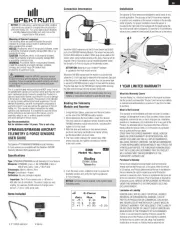
25 Maart 2025
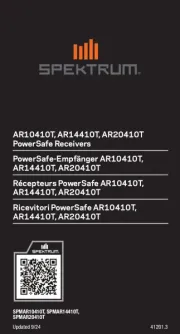
25 Februari 2025

25 Februari 2025
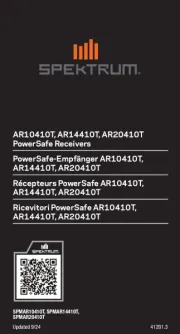
25 Februari 2025

16 November 2024

23 Augustus 2024

23 Augustus 2024

23 Augustus 2024

30 Juli 2024

21 Juni 2024
Handleiding Radiografisch bestuurbaar speelgoed
- Traxxas
- Little Tikes
- SAB
- Hobbywing
- PowerBox Systems
- Hobby Zone
- Ninco
- JR
- Vaterra
- Sky Rider
- Ripmax
- Spin Master
- RC4WD
- Force Engine
- Carson
Nieuwste handleidingen voor Radiografisch bestuurbaar speelgoed
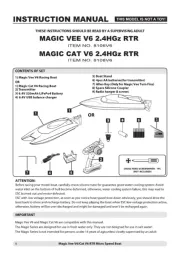
28 Juli 2025
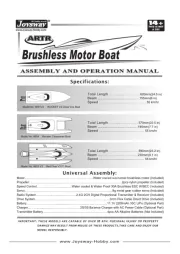
28 Juli 2025
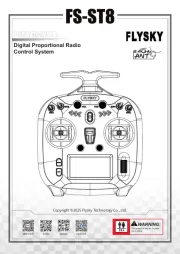
28 Juli 2025
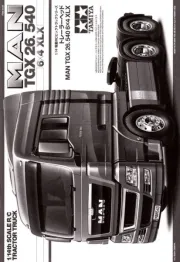
9 Juli 2025
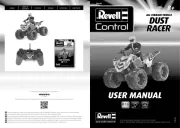
8 Juli 2025

8 Juli 2025
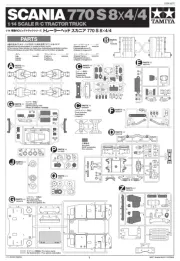
7 Juli 2025
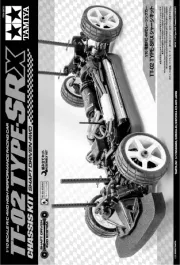
7 Juli 2025

7 Juli 2025
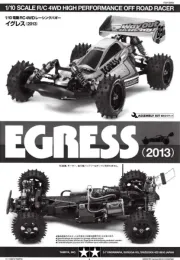
7 Juli 2025